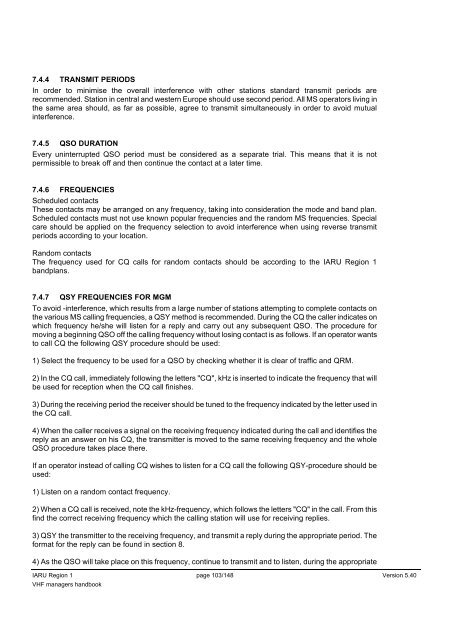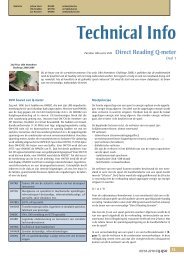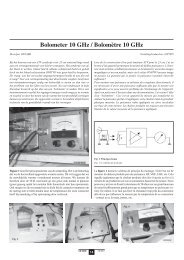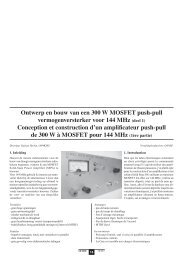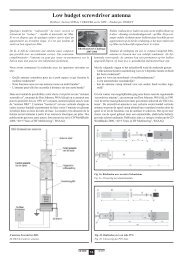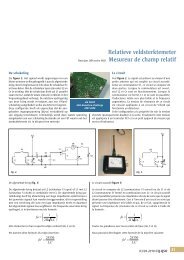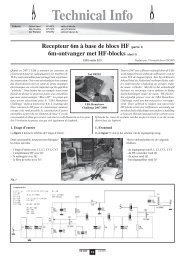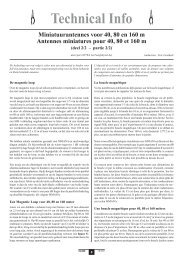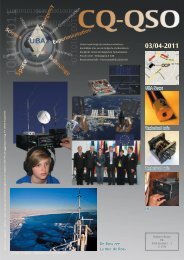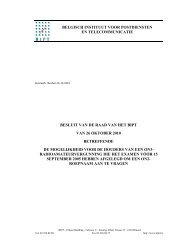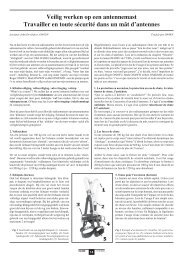IARU Region 1 VHF Managers Handbook - UBA
IARU Region 1 VHF Managers Handbook - UBA
IARU Region 1 VHF Managers Handbook - UBA
Create successful ePaper yourself
Turn your PDF publications into a flip-book with our unique Google optimized e-Paper software.
7.4.4 TRANSMIT PERIODS<br />
In order to minimise the overall interference with other stations standard transmit periods are<br />
recommended. Station in central and western Europe should use second period. All MS operators living in<br />
the same area should, as far as possible, agree to transmit simultaneously in order to avoid mutual<br />
interference.<br />
7.4.5 QSO DURATION<br />
Every uninterrupted QSO period must be considered as a separate trial. This means that it is not<br />
permissible to break off and then continue the contact at a later time.<br />
7.4.6 FREQUENCIES<br />
Scheduled contacts<br />
These contacts may be arranged on any frequency, taking into consideration the mode and band plan.<br />
Scheduled contacts must not use known popular frequencies and the random MS frequencies. Special<br />
care should be applied on the frequency selection to avoid interference when using reverse transmit<br />
periods according to your location.<br />
Random contacts<br />
The frequency used for CQ calls for random contacts should be according to the <strong>IARU</strong> <strong>Region</strong> 1<br />
bandplans.<br />
7.4.7 QSY FREQUENCIES FOR MGM<br />
To avoid -interference, which results from a large number of stations attempting to complete contacts on<br />
the various MS calling frequencies, a QSY method is recommended. During the CQ the caller indicates on<br />
which frequency he/she will listen for a reply and carry out any subsequent QSO. The procedure for<br />
moving a beginning QSO off the calling frequency without losing contact is as follows. If an operator wants<br />
to call CQ the following QSY procedure should be used:<br />
1) Select the frequency to be used for a QSO by checking whether it is clear of traffic and QRM.<br />
2) In the CQ call, immediately following the letters "CQ", kHz is inserted to indicate the frequency that will<br />
be used for reception when the CQ call finishes.<br />
3) During the receiving period the receiver should be tuned to the frequency indicated by the letter used in<br />
the CQ call.<br />
4) When the caller receives a signal on the receiving frequency indicated during the call and identifies the<br />
reply as an answer on his CQ, the transmitter is moved to the same receiving frequency and the whole<br />
QSO procedure takes place there.<br />
If an operator instead of calling CQ wishes to listen for a CQ call the following QSY-procedure should be<br />
used:<br />
1) Listen on a random contact frequency.<br />
2) When a CQ call is received, note the kHz-frequency, which follows the letters "CQ" in the call. From this<br />
find the correct receiving frequency which the calling station will use for receiving replies.<br />
3) QSY the transmitter to the receiving frequency, and transmit a reply during the appropriate period. The<br />
format for the reply can be found in section 8.<br />
4) As the QSO will take place on this frequency, continue to transmit and to listen, during the appropriate<br />
<strong>IARU</strong> <strong>Region</strong> 1 page 103/148 Version 5.40<br />
<strong>VHF</strong> managers handbook


